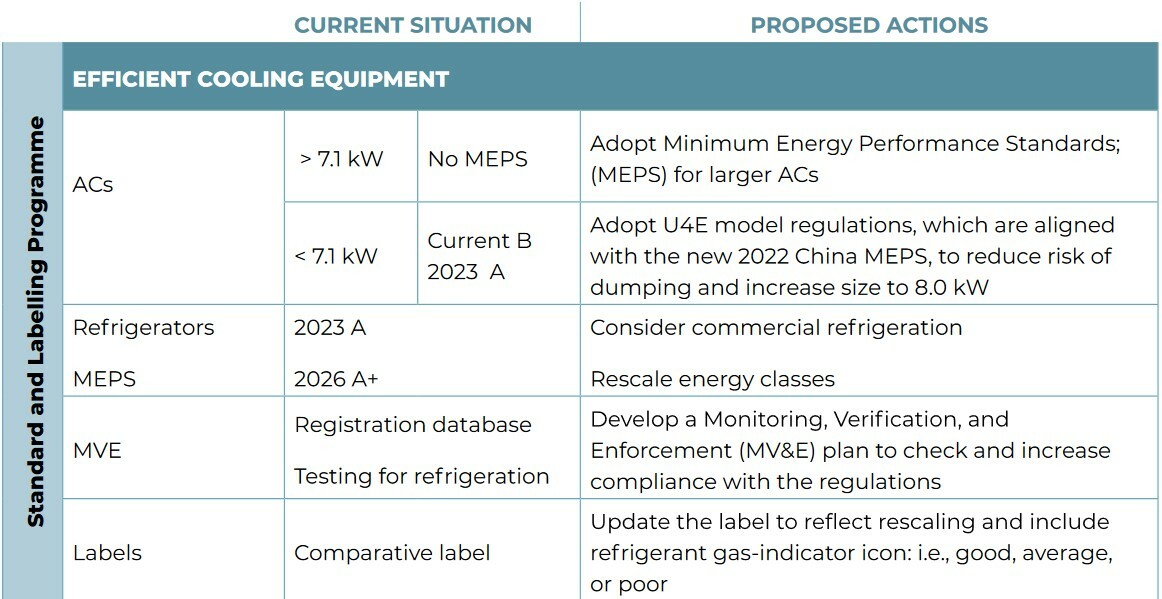Key figures of the refrigeration sector in South Africa
The stock of household refrigerators is expected to double by 2040 and AC sales should increase with economic growth, according to South Africa's National Cooling Plan.
Earlier in 2023, South Africa released its national cooling plan, which outlines the country's efforts to improve energy efficiency and reduce CO2 emissions.
The air conditioning market in South Africa
AC sales in South Africa rose from 180,000 in 2011 to 350,000 in 2016, after which they stagnated due to slow economic growth. The average ownership in the residential sector is quite low (4%) but varies across socio-economic groups. For instance, among the most affluent households, market penetration reaches 56%. The vast majority (97.5%) of AC models available in the market use R410A while the remaining 2.5% still use R22.
AC sales are expected to increase as economic growth improves.
The refrigeration market in South Africa
About 85% of South African households own a refrigerator. Total refrigerator stock was estimated at about 14 million in 2016. It is expected to reach 27.8 million refrigerators by 2040, thus doubling the current stock within 20 years.
Concerning commercial refrigeration, regional projections predict strong growth in the retail and beverage sector, spearheaded by the food-retail industry, medium-size grocery stores or supermarkets, hypermarkets, and restaurants.
Improving the energy efficiency of cooling appliances in South Africa
Energy efficiency standards and labelling measures were implemented in 2015/2016 in South Africa. However, these MEPS levels are substantially below the MEPS requirements currently set in China, Europe, and Japan, which have recently been tightened. Therefore, South Africa’s MEPS were revised in 2019/20 and research was initiated in 2021 to revise energy labels as well.
According to national projections, electricity used for cooling is expected to grow to 20% of total final electricity consumption, representing 44.4 MtCO2 in 2030. The authors of the document believe that if the National Cooling Plan is implemented, the country could save 13.3 MtCO2 by 2030.
Some of the proposed actions listed in South Africa’s National Cooling Plan are presented in the figure below.

Energy efficiency index for refrigerators in South Africa: below 55 for class A.
The complete document is available in FRIDOC.
